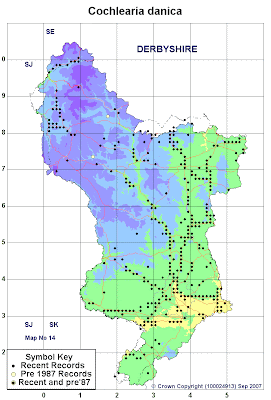Its probably daft to start a new blog by writing about something that happened 20 years ago.
So I'm going to.
 |
| The Orrery by Joseph Wright of Derby. |
Earlier this week I got chatting to a museum colleague about some events they're planning at the moment, and we began brainstorming a few extra ideas. We were talking about ways to reach new audiences and bring alive the work of
Joseph Wright of Derby - our city's most famous son. There's so much talk nowadays about how we all need to be creative, innovative and inspiring that you could be forgiven for thinking we'd never been that way before. So I told her of a project I ran many years ago to bring one of Wright's most iconic paintings into the young hearts and minds of our visitors. I'd almost forgotten what we managed to achieve way back then, and mostly in our spare time. What I went on to help create was totally unrelated to my actual work as a museum naturalist, yet even now I see it as one of the most inspiring pieces of work I've ever done at Derby, eventually winning a Gulbenkian Award for Imaginative Education Work.
It was called "
The Joseph Wright Cosmic Roadshow"
It was the early 1990s. Derby Museum had sent the cream of its Joseph Wright painting collections off on a world tour, including
the most famous of his works -
The Orrery. Derby's painting were touring in a major exhibition of his work at museums in London, Paris and New York, and they were due back the following year. Big events had to be planned. I got involved and somehow ended up commissioning a mechanical orrery to help visitors understand what was actually going on inside that magnificent painting. You can still see this working Grand Orrery with its planets whizzing around a model sun inside Derby Museum today - but that's a tale for another time.
Meanwhile I and a colleague, David Erskine, began bouncing ideas around for something educational - something fun. Something quite different. We hit upon trying to explain what was happening inside Wright's painting of The Orrery, but from a totally wacky perspective. And we'd do it as a performance.
And so "
The Joseph Wright Cosmic Roadshow" began to evolve. David hit upon the idea of having two aliens getting to grips with how planets move around their suns. One alien was to be a teacher, called Educator Phobos, whilst the other was his rather stupid pupil, Ursa Major, and they were to use Wright's painting of The Orrery as the starting point of their explanation. After all, Educator Phobos had met Joseph Wright on one of his many time-travelling jaunts back to earth's 18th century!
Meanwhile I'd been listening to music -Vangelis to be precise.One particular racy piece of music (Pulstar) set my own creative juices flowing, and images of planets and orrery paintings began flashing into my mind. That was it! . . we'd start our production with fast-moving audio-visual slide show before out intrepid aliens came out onto the stage and began making everyone laugh.
Well, our ideas began to grow, as did the scale of the project. David and I spent hours and hours each evening, for weeks on end planning, scheming and crafting the script on my shiny new
Amstrad PCW or building props for our show. Meanwhile I worked away with a room full of Kodak carousel projectors, reel-to-reel tape recorders and Electrosonic a/v kit that I'd scrounged from places like Derby Playhouse, Derby University and The Assembly Rooms, whilst David searched amongst his friends for just the right kind of voices for the special audio effects we wanted.
And the day eventually came when Joseph Wright's Orrery painting returned to its home city and was delivered back to Derby Museum and Art Gallery. I was waiting there, outside with a camera, capturing the moment the lorry from
Momart came down The Strand with its valuable cargo and Wright's works were gingerly brought inside into the recently refurbished Wright Gallery for re-hanging. Those pictures were destined to become the end images used in my third and final audio-visual sequence, set to a short but stunningly rousing piece of music by
Michael Nyman.

And so on a grey February morning in 1991 the doors to Derby Museum opened at 10am, letting in a massive queue of people for the first of five magical performances of
The Joseph Wright Cosmic Roadshow.
Dim the lights . . .
Queue music . . .
. . . To watch the Cosmic Roadshow, follow this link to the next post.





